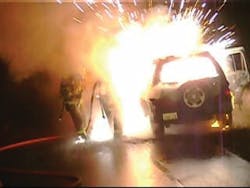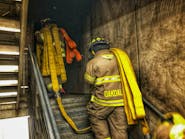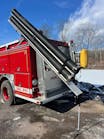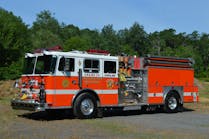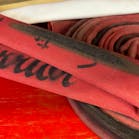Water and Magnesium Fires: Developing an Attack Plan
On March 30, 1988, there was a tractor-trailer explosion in Chicago causing 200 people to evacuate from two different factories. The tractor-trailer was full of 91% pure magnesium. The trailer burned at 2,030 degrees Fahrenheit, which melted the aluminum and steel trailer. Firefighters on scene could not extinguish the fire and instead let the fire burn through the night so it could burn itself out after it had made its way through all the magnesium. Firefighters spent their time on scene cooling exposures and making sure the fire did not spread to surrounding exposures.
In 2011, a fire department on North Carolina's coast started the morning off with apparatus check offs. A call came in for a vehicle fire down the street from the station. The engine arrived to a vehicle involved in the interior. The crew got off the engine, pulled a front bumper 1-3/4-inch hoseline and advanced it to the vehicle. As the crew got closer to the vehicle, the dash exploded from the violent reaction with water being introduced to the magnesium. One firefighter was rushed to the hospital. That firefighter no longer works in the fire service due to the injuries sustained from the car fire.
Magnesium incidents have happened all over the country and across the oceans. Departments had to change their tactics dealing with such incidents in order to keep their firefighters safe as well as the people who they had sworn to protect. Magnesium was usually only talked about in old Volkswagen engines and Ford F150 trucks, but in today’s society magnesium can be found in all vehicles on the road, household appliances, as well farming equipment and fertilizer.
When threats increase for different types of incidents, as a fire department, we get together and train on these types of incidents so when they do occur we are not caught off guard and place our customers as well as our fire department brothers and sisters in danger. New self-contained breathing apparatus (SCBA), gear, apparatus, and strategies/tactics are all things that come from what we do best, which is train and figure out ways to keep us and everyone else safe in this line of work. When hybrid vehicles were introduced and placed on the road, firefighters went to car lots or manufacturers to study how they could handle hybrid vehicle situations. Now fire departments across the country know how to handle hybrid vehicle incidents without getting themselves hurt.
Magnesium Basics
This is the same way that fire departments across the country need to handle magnesium incidents. We, as a whole, need to know how to handle the magnesium incidents on a hazardous materials basis, as well as a fire basis. Magnesium is considered to be in the Class D Fire category. It has a melting point of 1,202 °F and a boiling point of 2,024 °F. When magnesium is in its metal form, it burns very easily in air. When the magnesium burns, it reacts with the oxygen to form magnesium oxide. The magnesium oxide is the bright white light you see when the magnesium is burning. In order to start the reaction, the magnesium needs a source of energy.
Activation energy is the minimum energy required in order for a chemical reaction to proceed with its process. Magnesium acts like wood because when it is smaller, it is easier to react or ignite like saw dust. The larger it is, the harder it is for the Magnesium to react because the whole surface area of the magnesium has to be heated to its ignition point. When part of the metal is heated, that does not mean that the whole piece of metal will react; it might just be that one spot that reacts and the rest of it never does react because it never got heated enough to react. If, for example, a welder takes a torch to one area of the metal and not the whole piece that one place will ignite and not the rest. The rest never got heated enough to ignite so if you are at a magnesium fire and it is contained to a certain area and the rest of the magnesium has not ignited, keep the rest of the magnesium cool with water and either put the ignited metal out with a Class D extinguisher or just let it burn itself out since, it cannot spread to the rest of the metal. When magnesium interacts with water, it will form a hydrogen gas that ignites violently due to the excessive heat and oxygen supply. When it reacts, it will burn hot enough to decrease the water molecule, which turns to a Hydrogen Gas. The Chicago Fire Department performed tests that showed that if you use large quantities of water quickly, it could be used to cool the magnesium and later be extinguished.
Depending on your operating guidelines, there needs to be a look at vehicle fires due to magnesium being placed in all vehicles. The department should consider using a Class D extinguisher along with the selected hoseline. The hose stream could be used to cool the vehicle, while the Class D extinguisher could be used extinguish the magnesium fire. The Class D extinguisher will act as a smothering agent on the metal fire. If you’re without a Class D extinguisher, it would be a good idea to stand back, open your hoseline and cool the vehicle in order to advance slowly on the vehicle to finish extinguishing. Remember, if you cool the magnesium down then it has a high potential to be extinguished. A carbon dioxide extinguisher should not be used as it will become a hazard and become a fuel. Carbon dioxide? It becomes a combustive oxidizer and can cause a violent reaction.
Magnesium Use Growing In Vehicles
Looking at vehicles with magnesium we knew that the metal was only found in older Volkswagens and Fords. That is not true anymore. Everyone is looking to save a dollar and still have something strong and light. Over the next 10 years car companies will be adding magnesium to other places in their cars, including BMW, Ford, Mercedes, GMC, Audi, Jaguar, and other vehicles. Magnesium casings will be added to their transmissions. Ford is adding magnesium to their dashboards and radiator covers. GM is moving to figure out new ways for magnesium to be used by placing it in door panels, hoods, and trunks. Chrysler has begun painting their vehicles with a pearl finish, which is actually magnesium. Vehicle companies have moved to add magnesium to truck grills, rims, air conditioner parts, large whole truck frames, intake manifolds, as well as engine blocks.
Household appliances have gone to magnesium because it is lightweight. You will find it in refrigerators, pots and pans, toasters, ovens, cabinets, microwaves, energy saving light bulbs, and more things to come.
There have not been a lot of findings with health issues dealing with magnesium because our body ingests a certain amount of magnesium daily. When magnesium ignites, this is where health issues rise. The magnesium ignites and you stare at the light you will run the risk of getting a Welder's Flash Fever. This involves fever, vomiting, diarrhea, chills, and muscle pain. There also have been findings of firefighters suffering severe brain trauma when they were next to the ignition of the magnesium.
Conclusion
Fire departments across the country need to develop or mold their strategies when it comes to magnesium. Operating guidelines should cover vehicle fires to start. Magnesium can be found in everyday day life. Officers and firefighters need to look at the vehicle before approaching to observe like you would on structure fire.
ERIC JAMES is a fire apparatus operator for New Hanover County, N.C., Fire Rescue Department. He is currently assigned to Engine 12, covering an area that is predominately an industrial and hazardous materials district. He serves on USAR Task Force 11. He began his fire service career with Leland, N.C., Fire Rescue Department where he worked in training as well as apparatus maintenance. James also serves as a fire instructor for Brunswick County, N.C., and is working on a bachelor's degree in emergency and disaster management.
